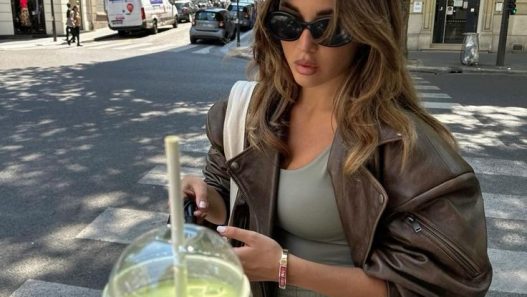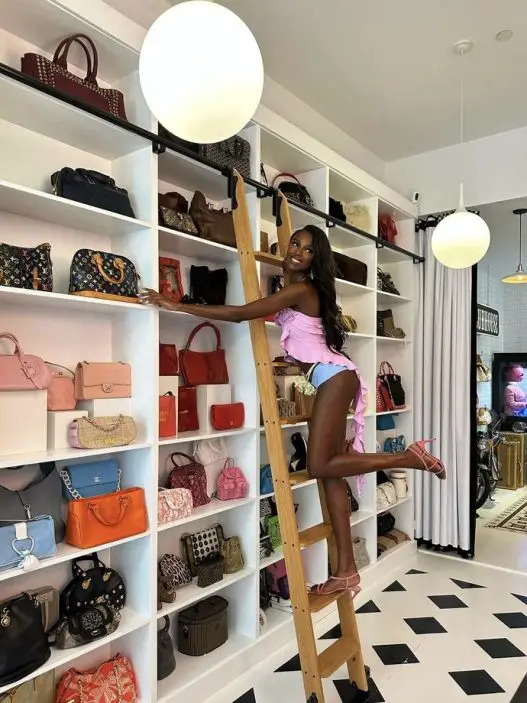Introduction
Old Money fashion is the embodiment of understated luxury, timeless style, and a legacy of wealth passed down through generations. Rooted in tradition, it exudes elegance without the need for loud logos or overt displays of affluence. Instead, Old Money fashion focuses on quality, craftsmanship, and discreet sophistication. From the lavish estates of European aristocrats to the stately homes of East Coast elites, the Old Money aesthetic has evolved over centuries, shaping how wealth and taste are communicated through clothing. In this article, we’ll explore the history of Old Money fashion, its key elements, and the influences that have defined this enduring style.
1. Origins of Old Money Fashion
Old Money fashion is deeply intertwined with the social and economic histories of aristocratic families, particularly in Europe and the United States. It emerged as the distinction between newly rich industrialists (New Money) and established wealthy families grew more pronounced. While the New Money set often displayed their wealth through ostentatious and flashy styles, Old Money families favored more discreet forms of luxury, favoring quality and subtlety over showiness.
- European Influence: Old Money fashion’s roots can be traced to European nobility, where aristocratic families established codes of dress that emphasized formality and propriety. In England, for instance, the aristocracy adhered to strict dress codes for every occasion, with classic pieces like tailored morning coats, waistcoats, and breeches becoming staples of their wardrobes.
- American Influence: In the United States, Old Money fashion evolved in the late 19th and early 20th centuries among East Coast elites. Influenced by European standards, American Old Money families embraced a similar emphasis on tailored clothing, refined fabrics, and a look that projected both wealth and restraint.
2. Key Elements of Old Money Fashion
Old Money fashion is defined by a few key elements that prioritize longevity and subtlety, reflecting an attitude of quiet sophistication rather than the desire for recognition. These elements continue to define Old Money style today.
- Tailored Clothing: Perfectly fitted clothing is one of the cornerstones of Old Money style. Tailored suits, blazers, and trousers in neutral tones create an air of refinement. Designers like Savile Row tailors have made bespoke tailoring an iconic element of Old Money fashion.
- Quality Fabrics: The fabric selection in Old Money fashion is second to none. Cashmere, wool, tweed, and silk are commonly used for their durability, luxury, and timeless appeal. The focus is on pieces that wear well over time and get better with age.
- Neutral Colors: Old Money fashion relies on neutral, muted tones such as navy, gray, beige, ivory, and brown. These colors are elegant, versatile, and don’t draw attention to themselves, allowing the quality of the clothing to shine instead.
- Classic Accessories: Accessories in Old Money fashion are understated but often highly valuable. Items like leather handbags (often handmade), silk scarves, pocket squares, and simple gold jewelry are common. Jewelry in Old Money fashion is typically discreet, with a preference for heirlooms that reflect generational wealth.
- Chic Footwear: Polished leather shoes, including loafers, Oxfords, and riding boots, are staples of Old Money wardrobes. Brands like Church’s and John Lobb are well-known for their high-quality, timeless footwear.
3. The Influence of British and American Equestrian Style
The Old Money aesthetic has been heavily influenced by equestrian and country club fashion. The equestrian lifestyle of British nobility and American East Coast families often called for clothing that was both practical and stylish. This resulted in the development of an entire sub-genre of Old Money fashion that focused on refined sportswear and country attire.
- Riding Jackets and Tweed: Equestrian style introduced items like tweed jackets, riding pants, and jodhpurs, which remain quintessential components of Old Money wardrobes. The fabric’s durability and traditional associations with British country estates added to its appeal.
- Hunting and Polo: The upper class has long been associated with polo, hunting, and other country pursuits, which influenced the development of tailored outerwear like wool coats, plaid shirts, and boot-cut trousers, all designed for both style and functionality.
- Country Clubs and Formal Sportswear: The country club look—think chinos, collared shirts, and cable-knit sweaters—became a defining feature of Old Money fashion in America, often associated with leisure activities such as golf, polo, and sailing.
4. Iconic Figures and Designers Who Shaped Old Money Fashion
Throughout history, several figures and designers have come to represent and shape the Old Money aesthetic. These individuals were not only wealthy but also style icons who helped define what it meant to dress with refined elegance.
- Audrey Hepburn: Hepburn’s timeless style in films like Breakfast at Tiffany’s epitomized Old Money elegance. Her preference for simple, yet exquisite pieces such as little black dresses and pearls has become a hallmark of the Old Money style.
- Princess Diana: Princess Diana, with her understated yet luxurious wardrobe, became an Old Money fashion icon during her time as the Princess of Wales. She frequently wore classic, tailored suits, knee-length skirts, and elegant coats in soft hues.
- Coco Chanel: While Chanel is often associated with high fashion, the brand’s commitment to timeless pieces—such as the iconic Chanel suit—has strong ties to the Old Money aesthetic. The brand’s understated luxury, particularly in its use of tweed, has become a symbol of refined elegance.
- Designers: Tailors such as Savile Row’s Anderson & Sheppard and brands like Ralph Lauren, Burberry, and Hermes have been instrumental in crafting clothing that embodies Old Money sensibilities. Ralph Lauren, in particular, with his focus on classic American styles, has become synonymous with the Old Money aesthetic.
5. Modern Interpretations of Old Money Fashion
In recent years, the Old Money aesthetic has seen a resurgence, especially in the world of fashion blogs, influencers, and social media. The classic, refined style that was once exclusive to the upper echelons of society is now more accessible, though it still remains centered on quality and timelessness.
- Minimalism: The modern take on Old Money style often incorporates elements of minimalism—simple, clean silhouettes, neutral colors, and quality fabrics—that reflect the quiet luxury that Old Money fashion is known for.
- Sustainability: In today’s fashion landscape, sustainability plays a role in maintaining the ethos of Old Money fashion. Many modern interpretations emphasize investment pieces that last, echoing the original focus on longevity and high-quality craftsmanship.
- Vintage and Thrift Shopping: As the desire for Old Money style grows, many turn to vintage shopping for timeless, high-quality pieces that embody the classic look. Thrifted tweed blazers, silk scarves, and leather handbags are among the most sought-after items.
Conclusion
Old Money fashion is a style rooted in history, where discretion, refinement, and quality are the cornerstones. From European aristocracy to the East Coast elite, the look has evolved over the centuries while maintaining its emphasis on timeless luxury and understated elegance. Today, it remains a coveted aesthetic, offering a way for individuals to embrace classic style that transcends fleeting trends. Whether through tailored suits, equestrian-inspired outerwear, or vintage accessories, Old Money fashion continues to inspire those who value the quiet power of true sophistication.


















